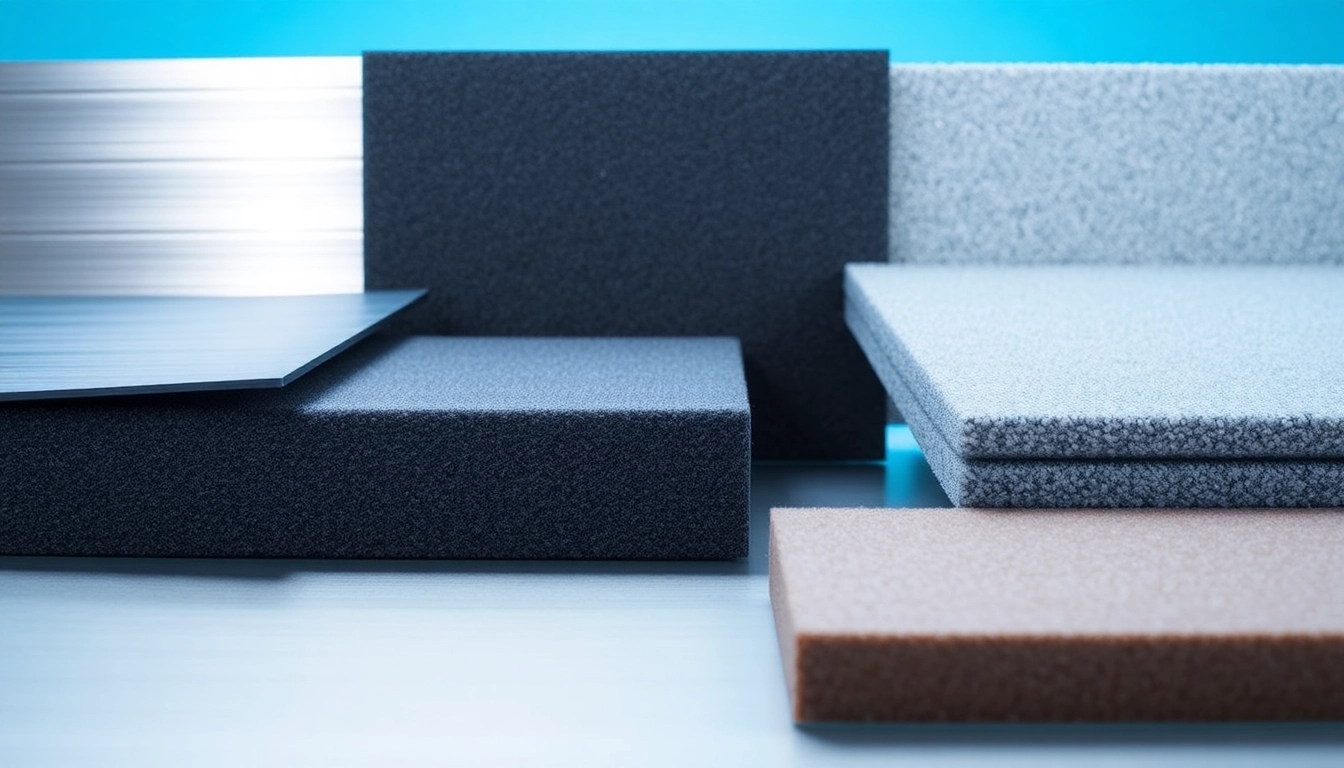Understanding Electromagnetic Shielding Materials
In today’s technology-driven world, the need for robust electromagnetic shielding materials has become increasingly critical. With the proliferation of electronic devices and systems, electromagnetic interference (EMI) can disrupt the performance, functionality, and reliability of sensitive electronic equipment. To address this escalating concern, effective electromagnetic shielding materials have emerged as vital components in various applications. In this article, we will delve into the fundamentals of these materials, their characteristics, types, applications, and emergent trends shaping the future of shielding technologies.
What Are Electromagnetic Shielding Materials?
Electromagnetic shielding materials are specially formulated substances designed to block or mitigate the effects of electromagnetic fields. These materials function by attenuating electromagnetic waves, whether they are produced by natural sources or artificial devices. The goal of employing these materials is to prevent unwanted emissions from electronic devices and to shield critical components from external interference. Without efficient shielding, devices like computers, medical equipment, and telecommunication systems can encounter operational failures, data corruption, and performance degradation.
The Role of Electromagnetic Shielding
The primary role of electromagnetic shielding is to reduce electromagnetic interference. This is particularly important in environments where sensitive electronic components are used, such as hospitals, aerospace applications, and data centers. Shielding can prevent radiation from leaking out of devices and shield devices from external electromagnetic waves that may impact their functioning. For instance, in medical imaging equipment like MRI machines, reliable shielding is essential to maintain data integrity and image clarity.
Key Characteristics of Effective Shielding
Effective electromagnetic shielding materials share several key characteristics:
- High Electrical Conductivity: Materials with high conductivity effectively reflect and absorb electromagnetic waves.
- Robustness: The material must withstand environmental factors such as temperature fluctuations, humidity, and physical wear without degrading its shielding effectiveness.
- Weight and Flexibility: Depending on the application, lightweight and flexible materials may be preferred to facilitate ease of installation without compromising performance.
- Thermal Resistance: In high-temperature environments, materials must retain their properties without melting or becoming ineffective.
Common Types of Electromagnetic Shielding Materials
Metals Used in Shielding
Metals are the most commonly used materials for electromagnetic shielding due to their excellent conductive properties. Here are some predominant metals used:
- Copper: Known for its superior conductivity, copper is often used in various electronic applications and is one of the most reliable metals in EMI shielding.
- Aluminum: Lightweight and cost-effective, aluminum offers moderate conductivity and is used in applications where weight is essential.
- Steel: Often used in structural applications, steel provides durability and effective shielding, especially when thicker gauges are utilized.
- Nickel: Commonly used as a plating material, nickel enhances the shielding effectiveness of other metals by providing corrosion resistance.
- Brass: While not as efficient as copper, brass is often used for its mechanical properties and resistance to tarnishing.
Non-Metal Alternatives
In addition to metals, various non-metal materials have shown effective shielding properties. These materials often serve specific niche applications:
- Conductive Polymers: Emerging as a lightweight option, conductive polymers can be useful in flexible or conformal applications.
- Carbon-based Materials: Graphene and carbon nanotubes have garnered attention for their unique properties, including flexibility and high conductivity.
- Metal Foams: Providing low weight with high structural integrity, metal foams offer effective shielding and are particularly useful in aerospace applications.
- Shielding Fabrics: Specialized fabrics, often coated with conductive materials, are used in clothing and enclosures for portable devices.
Composite Materials for Enhanced Shielding
Combining different materials often enhances shielding performance. Composite materials are tailored to optimize both electrical and mechanical properties. Examples include:
- Metal-Polymer Composites: These combine the flexibility of polymers with the conductivity of metals, creating materials ideal for various applications.
- Nanocomposites: Incorporating nanoparticles within a matrix can significantly enhance the shielding effectiveness while maintaining lightweight properties.
- Conductive Coatings: These are applied as a layer on non-conductive materials, effectively turning them into shields against EMI.
Applications of Electromagnetic Shielding
Industrial Uses
Industrial environments are among the largest users of electromagnetic shielding materials. Applications include:
- Aerospace: Shielding is critical in aerospace systems to protect sensitive electronics from high levels of EM radiation.
- Manufacturing Equipment: Machines that use motors and conveyors must be shielded to minimize EMI that can lead to equipment malfunction.
- Communication Systems: Cellular networks and satellites benefit from robust shielding to protect against interference and ensure signal integrity.
Consumer Electronics
The consumer electronics sector is also heavily reliant on effective shielding materials. Examples include:
- Smartphones and Tablets: These devices require shielding to prevent interference from various components, ensuring clearer signal transmission and reception.
- Computers and Laptops: EMI shielding is critical in computers to protect sensitive data and maintain optimal performance.
- Home Appliances: Devices such as microwaves and refrigerators are shielded to limit interference with other electronics in the home environment.
Healthcare and Medical Equipment
Shielding is paramount in healthcare settings for several reasons:
- Diagnostic Imaging: MRI machines and other imaging technologies rely on shielding to ensure accurate imaging results.
- Patient Monitors: EMI shielding in patient monitoring equipment prevents false readings and enhances patient safety.
- Therapeutic Devices: Equipment like radiosurgery machines must be shielded from surrounding EM fields to function correctly.
Evaluating Shielding Effectiveness
Measurement Techniques
The effectiveness of shielding materials is evaluated using several measurement techniques:
- Shielding Effectiveness (SE) Testing: This measures the material’s ability to attenuate electromagnetic waves, typically assessed in decibels (dB).
- Radiated Emissions Testing: Determines how much radiation escapes from devices, which helps identify potential interference issues.
- Conducted Emissions Testing: Focuses on testing the electrical signals that conduct through power lines and other conduits.
Standards and Compliance
Compliance with industry standards (such as MIL-STD-285, IEEE standards) is crucial for ensuring that shielding materials provide adequate protection. Testing must align with these standards to measure performance adequately. Adhering to recognized testing protocols ensures that manufacturers can confidently recommend their materials for specific applications.
Common Misconceptions
Several misconceptions surround electromagnetic shielding that can influence purchasing decisions:
- More Material Means More Protection: This is not always true. The type of material and its properties matter more than the sheer volume.
- All Metals Shield Effectively: While many metals do provide effective shielding, certain configurations and treatments enhance protection.
- Shielding Is Only for Professionals: While some applications require specialized knowledge, numerous materials can be utilized in DIY projects.
Future Trends in Electromagnetic Shielding Materials
Innovations in Material Science
As technology evolves, so too do the materials used for electromagnetic shielding. Emerging trends include:
- Self-Healing Materials: Research is ongoing into materials that can return to their original state after damage, increasing longevity and performance.
- Smart Materials: These materials can adapt to environmental conditions, enhancing their shielding effectiveness dynamically.
- Biodegradable Shielding Solutions: With environmental concerns rising, the demand for eco-friendly shielding materials is likely to increase.
Environmental Considerations
Manufacturers are also looking towards sustainability. Electromagnetic shielding materials that have a lower environmental footprint are becoming crucial. This shift also drives innovation in the recycling and reuse of materials used in shielding applications.
The Rise of Smart Shielding Solutions
Smart shielding solutions that integrate sensors and adaptive materials are on the horizon. These innovations aim to provide real-time feedback and adjustments to shield against variable electromagnetic environments, enhancing effectiveness across various applications.




